



Summary & Bibliography

click on thumbnails below to see
The Tattoos:
War Tattoos
The period between the First and Second World Wars has been dubbed the “Golden Age of Tattooing” (DeMello 2000:63). American servicemen in the army and navy tattooed as acts of patriotism and nationalism, group identity, memorial dedications to home, girlfriends, wives and family and the wars themselves. Click on the thumbnails below to see the tattoos.
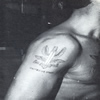 |
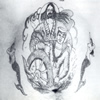 |
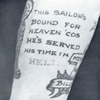 |
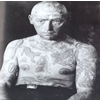 |
 |
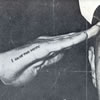 |
 |
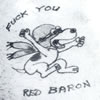 |
Tattoos during this period included American flags and eagles, military insignia, ships and tanks, anchors and seamen, “girlie tattoos” (nude or semi-nude women), names of girlfriends, wives and “mom” (the “vow tattoo”), swords, daggers, guns, animals, roses, flowers, hearts and various sea and air themes (DeMello 2000:64-65). Tattoos were most commonly placed on highly visible areas, the upper and lower arms, the back, chest and calves. Tattoo colours were simple and often monochromatic, typically black or blue or red. These tattoos were images often derived from popular culture (and, importantly, from prior tattoo subcultures) and were, for obvious reasons during the wars, almost exclusively a male practice. The tattoos connoted a bond between men forged by patriotic and militaristic duty, and, by necessary association, masculinity and power.
Have a look at some Prison and Biker style tattoos next.





'Under the Skin', Copyright 2004, Tony Hewer.

